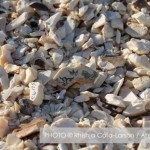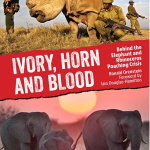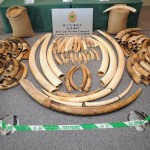Guest blogger: Steven Stone
“At least David and Goliath were of the same species, but, to an elephant, a man can only be a midge with a deathly sting.” – Beryl Markham, West with the Night, 1942.
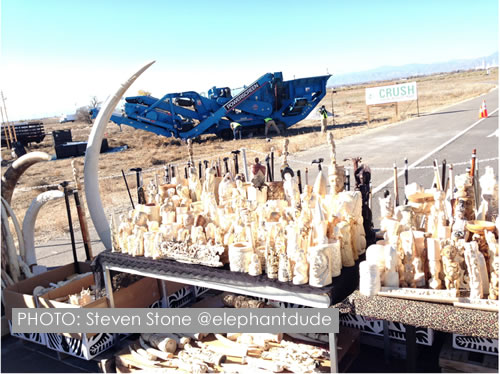
Last week, in Denver, I watched as the U.S. Fish and Wildlife Service crushed nearly six tons of ivory, the entire U.S. stockpile of ivory, into dust.
Dan Ashe, Director of the U.S. Fish and Wildlife Service, speaking at the event, said that “the main point of this crush is to send a signal to the world, to raise awareness about … an international crisis … We have to reduce the demand, we have to reverse that trend, we have to send the signal that ivory belongs to elephants and it belongs to elephants in the wild.”

Only four days earlier, I had been in the Town of Deep River, Connecticut. In the 19th century and until the early 1960s, more than 90% off the ivory that entered the United States passed through Deep River and the nearby Town of Ivoryton. Hundreds of thousands of elephants were killed and their tusks transported to Connecticut to support the trade. Deep River had decided that it would try to help save elephants now by telling the world about its history.
The ivory trade did not begin in Deep River and it did not end in Denver. Elephants have been hunted for their tusks for centuries, and at times elephant populations in different areas of Africa were decimated. However, as recently as 1900, there were millions of elephants living in Africa, and populations were able to rebound during better times.
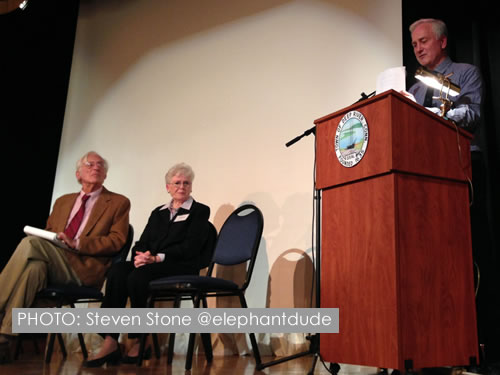
The program “Deep River and the African Elephant” began with speakers at the Deep River Town Hall Auditorium — which was sold out and had a standing-room only crowd. The audience listened intently as the historian Brenda Milkofsky talked about the history of Deep River and Ivoryton and its major role in the ivory trade. Herb Raffaele, recently retired as the Chief of the International Conservation Division of the U.S. Fish and Wildlife Service, spoke of the ivory trade today and the need to reduce the demand for ivory if elephants are to survive. He mentioned some initiatives that are providing some hope; notably efforts to change the values of the people who buy ivory. Dr. Paula Kahumbu, a conservationist and director of WildlifeDirect, who traveled from Kenya to speak in Deep River and in Denver, talked about how Kenyans view the current crisis and efforts they are making to protect their elephants and stop the ivory trade.
Deep River and Ivoryton processed almost all of the ivory used in the United States for more than one hundred years. Pratt, Read & Co. and Comstock, Cheney & Co. manufactured combs, buttons, bracelets, and later piano keys, for well-known piano makers, Steinway among them. Deep River became a company town, complete with housing built for its workers.

Estimates of the number of elephants killed to supply the United States with ivory in the late 19th and early 20th century vary — from 30,000 per year between 1905 and 1912 to as many as 44,000 per year between 1850 and 1914. The ivory industry in the U.S. likely reached its peak in 1913, the year in which 350,000 pianos were manufactured. These numbers do not even include the elephants killed to supply European countries with ivory.
Today, China is the largest consumer of ivory, accounting for an estimated 70% of the illegal ivory trade. In 2012, an estimated 25,000 to 35,000 African elephants were killed for their tusks. With anywhere from 370,00 to 500,000 wild elephants still left in Africa, the current rate of killings will wipe out the species in seven to twelve years. What is happening now is tantamount to genocide.
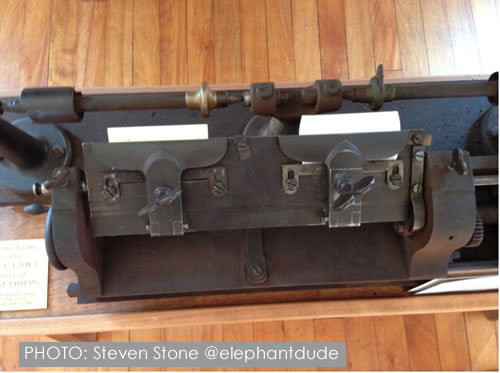
In 1956, Pratt, Read & Co. president Peter Comstock decided that plastic piano keys would be less expensive and simpler than keys made from ivory veneers. This shift to plastic, which took place over the next six to eight years, saved the lives of thousands of elephants.
Ivory was first and foremost a material and the products made from it drove the demand. The vast majority of products made from ivory were ordinary and there was no public outrage when plastic combs began to be sold instead of ivory combs. In the 21st century, things are different. Ivory is admired in Asia and prized as a status symbol, particularly in China, where a new middle class for the first time has the financial resources to buy ivory. The ivory trade is no longer just another business; terrorist groups in Africa are killing elephants, selling ivory on the black market and using the proceeds to purchase weapons and finance terrorist attacks and other operations.
Something else has changed: for the first time, there are not enough African elephants to meet the demand for ivory, and extinction is a real threat.
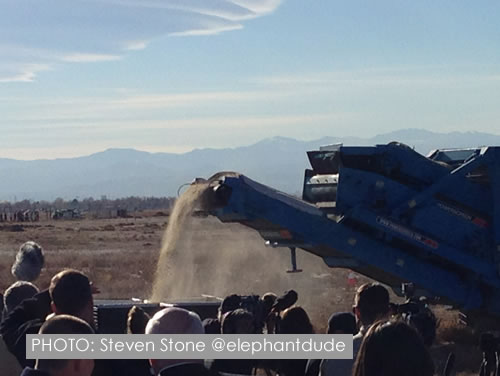
November 14, 2013 at the Rocky Mountain Arsenal National Wildlife Refuge in Colorado. Photo: Steven Stone
As I watched ivory dust begin to spill out of the giant crushing machine, it seemed to me that I was looking at ashes from a cremation. I thought of the countless elephants that had been slaughtered so that humans could have their tusks, of the brutality of the killings, and of the senselessness of it all. I also knew that while we were watching the U.S. ivory stockpile get crushed, elephants in Africa were almost certainly being killed at the same time. The world has changed in so many ways since the days when Deep River manufactured enough ivory keys to make 350,000 pianos in a single year. But for the elephant, the desire of humans to possess its tusks has not changed, and continues to pose the greatest threat to its survival as a species.
Steven Stone is an attorney in Washington DC who has spent years focused on elephant conservation and the ivory trade. He tweets about these and related topics on Twitter, under the username @ElephantDude.

